Addressing Gun Violence: Creating Visionaries, Storytellers and Community Activists
Curators notes:
Gun violence is an epidemic in the United States but for our students at Lighthouse Community Charter School in East Oakland, it’s an issue affecting youth at a very personal level. In 2019, 35% of seventh graders at Lighthouse knew at least one person who was hurt or killed by gun violence. The curriculum we developed to address this drew on the Expeditionary Learning Education Model, with interdisciplinary lessons in the humanities, math, and the arts. We focused on understanding gun violence and its impact on individuals, communities, and our country.Summary:
When students requested to learn more about the topic of gun violence, teachers drew on the Expeditionary Learning Education Model with interdisciplinary lessons in the humanities, math, and the arts, to co-design a three-month curriculum entitled “Addressing Gun Violence: Creating Visionaries, Storytellers, Community Activists,” with non-profit partner Vision Quilt. Included are examples of student work and a downloadable link to the Addressing Gun Violence toolkit.Gun violence is an epidemic in the United States but for our students at Lighthouse Community Charter School in East Oakland, it’s an issue affecting youth at a very personal level. In 2019, 35% of seventh graders at Lighthouse knew at least one person who was hurt or killed by gun violence.
When students requested to learn more about the topic of gun violence in their academic study, Lighthouse teachers designed an innovative three-month curriculum entitled “Addressing Gun Violence: Creating Visionaries, Storytellers, Community Activists”. We wanted our students to explore this issue and express themselves through the humanities, math, and the arts. We partnered with Vision Quilt to design and implement our program.
Our curriculum drew on the Expeditionary Learning Education Model, with interdisciplinary lessons in the humanities, math, and the arts. We focused on understanding gun violence and its impact on individuals, communities, and our country. We formed a Teen Council to advise our work, and designed a three-month curriculum that can be adapted and adopted by other middle school and high school educators.
This project was part of LRNG Innovators Challenge, which is made possible with support from John Legend’s Show Me Campaign, the National Writing Project, and the U.S. Department of Education. We also relied on CASEL for the Social Emotional Learning curriculum, and received a NoVo Foundation Innovation Award for this work.
What We Did and How We Adapted During the Pandemic
The “Addressing Gun Violence: Creating Visionaries, Storytellers, Community Activists” started with a pilot program in 2017: see video. After our initial successes, we decided to expand the program for the 2019-2020 school year as well as create a digital toolkit that educators could use to replicate our program.
Our work became more relevant during 2020 as the Black Lives Matter movement grew across the country following the murders of George Floyd and Breonna Taylor and cries for racial equity were raised as a result of the pandemic and its toll on underserved BIPOC communities.
When the 2019-2020 school year was interrupted by the coronavirus, we modified our teaching plans to focus on at-home education opportunities. Our students faced many challenges during the coronavirus pandemic, and it was important that our teachers be flexible to meet students’ needs in these unprecedented times. Since our “Addressing Gun Violence” program was slated to begin the winter/spring of the 2019-2020 school year, we had to modify our program in significant ways. We worked with Attitudinal Healing Connection, and Vision Quilt, to create art kits that enabled students to access arts education during the pandemic focused on building resilience, courage, joy, togetherness.
The development of our digital toolkit remained our top priority. Our toolkit is filled with photos, links, and learning prompts, and allows for educators to review the curriculum, source materials, lesson plans, and videos. You may download our entire three month curriculum through our digital toolkit link.
The Digital Toolkit
The toolkit, Addressing Gun Violence, includes six modules, offering educators a three-month curriculum that can be adopted in its entirety or in parts. Throughout these modules, students and educators are encouraged to engage with a difficult yet important topic: gun violence and its impact. The lesson plans provide creative ways for students to think critically and examine this topic through multiple perspectives and mediums.
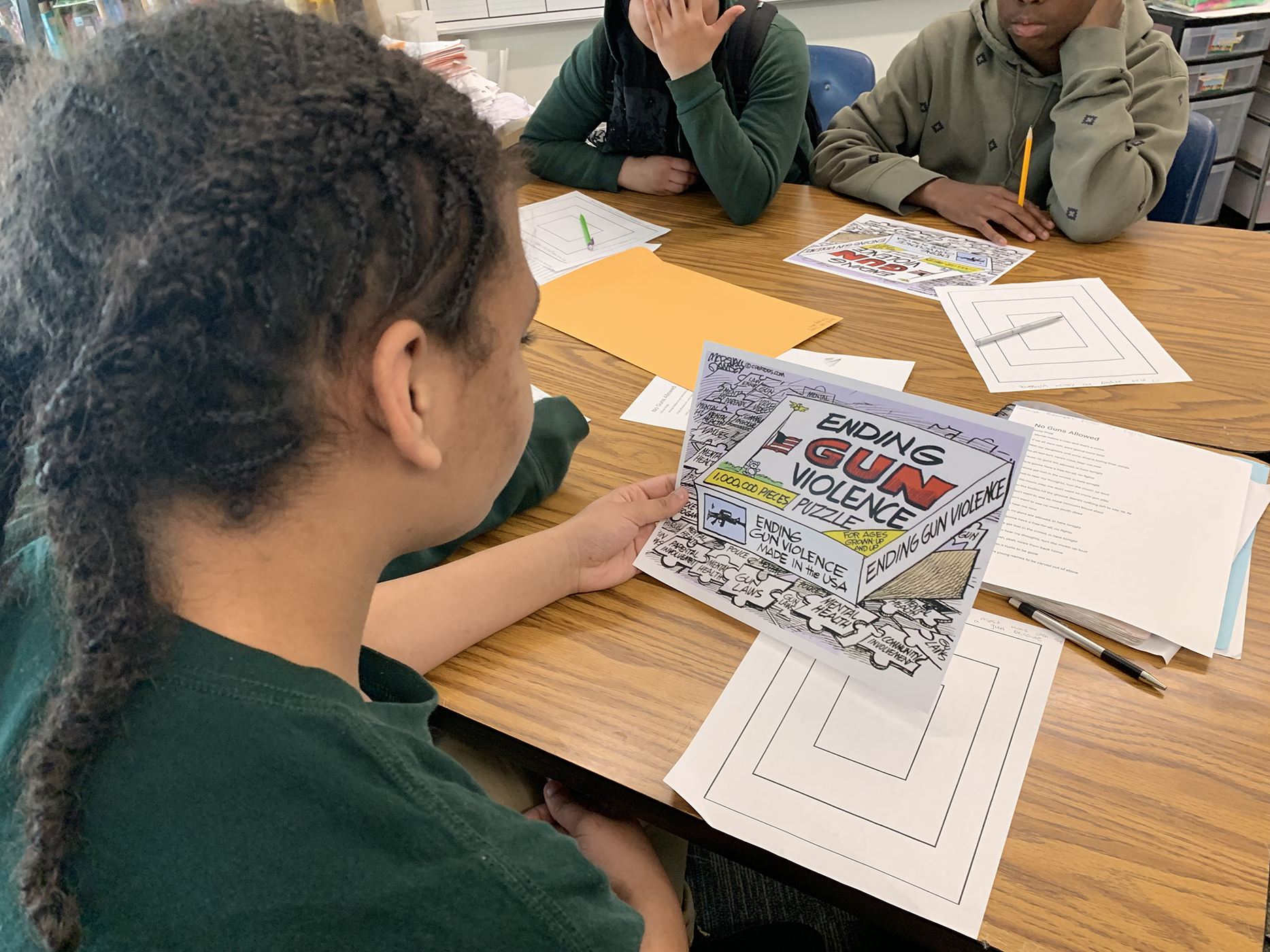
Module A is an introduction to the topic of gun violence. It can be implemented in a single day. The module sets the tone for our study, and it is an important time to create a safer space for students to process their emotions and personal experiences related to gun violence. There are times for sharing and connecting with other students around the topic. In the humanities component of the module, students watch, take notes, and synthesize information from different pieces, including “No Guns Allowed,” a music video by Snoop Lion. In the math component, students analyze the statement “92 people are killed with guns every day,” and learn about averages.
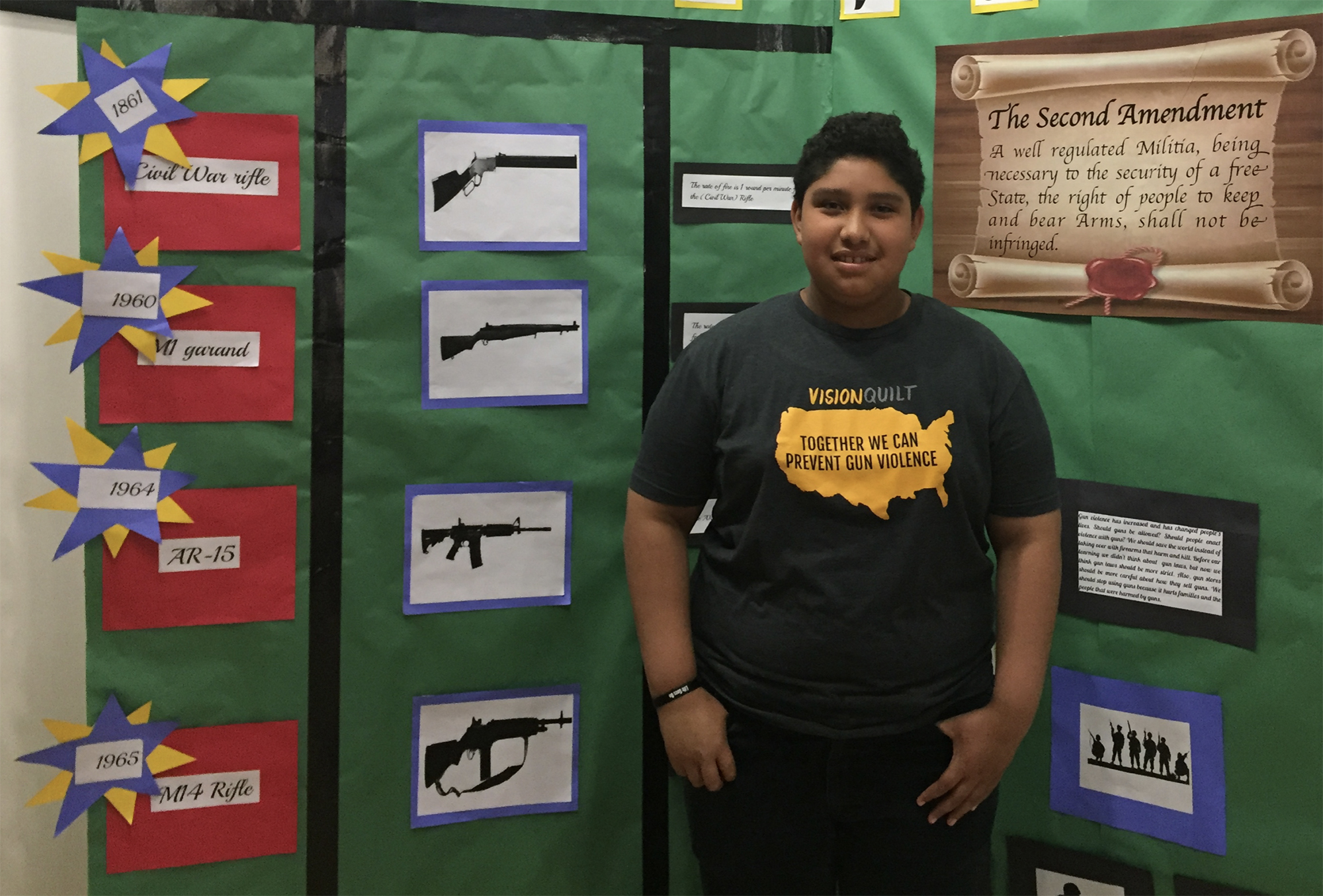
Module B offers a 14-day “case study” focused on the Second Amendment. In humanities classes, we focus on the historical and contemporary meaning of the Second Amendment, allowing for multiple points of view and interpretation. We discuss the history of the Black Panther Party — which was founded in Oakland, although educators could use other geographically/culturally relevant examples — to explore the intersections between gun rights and race. Students read and write poetry relevant to the topic. In the math component, students use proportional reasoning to explore how gun technology has changed over time, using tables, graphs, and writing to present their findings. This module also includes inviting guest speakers to present to the class.
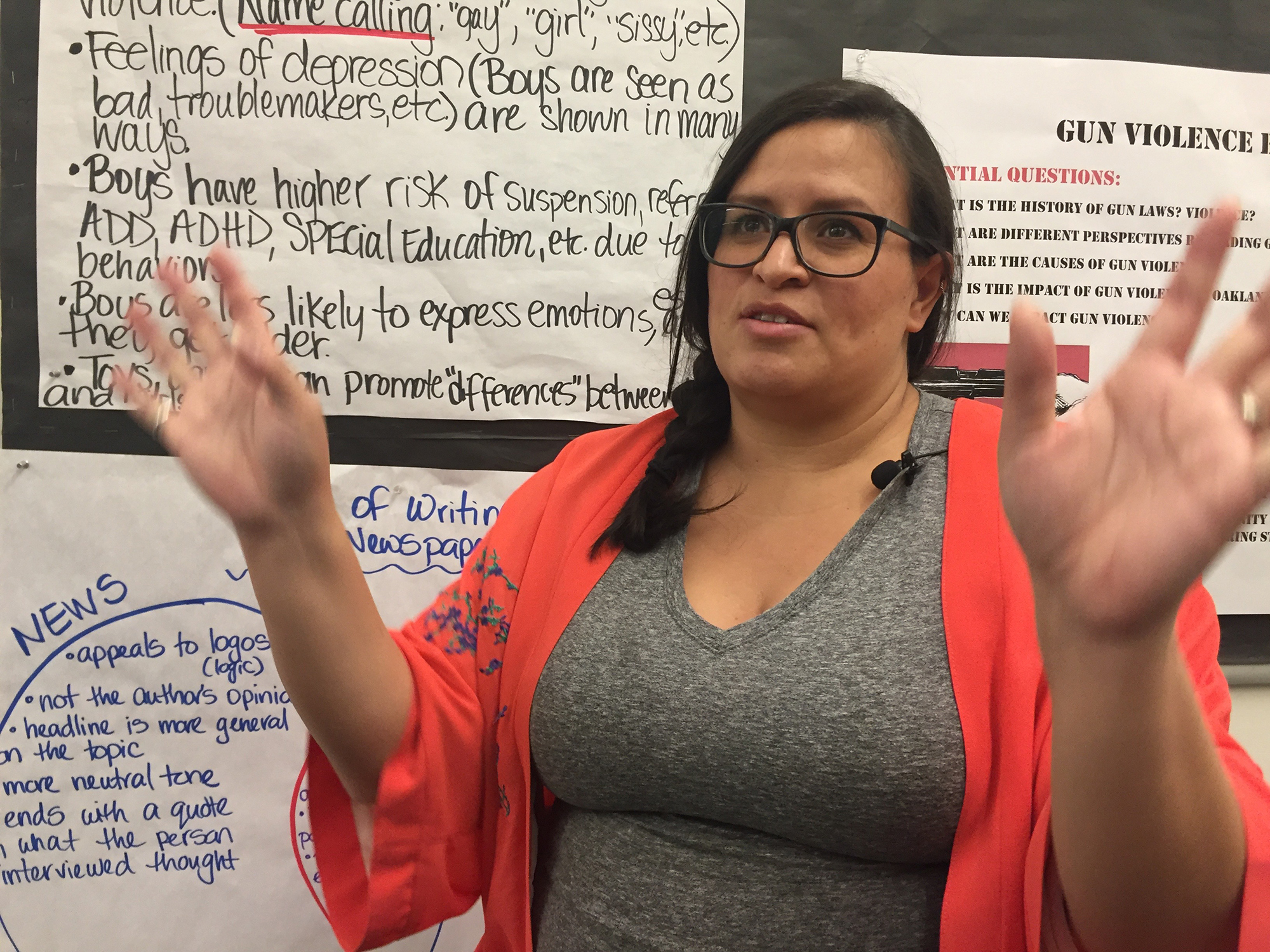
Module C offers a 20-day “case study” on the causes and impacts of gun violence. In humanities, we explore the psychology of gun violence, centered around both race and gender. We look specifically at the issue of “toxic masculinity” as a topic for gun violence. We use Violent Ends, a book written by 19 young adult authors as an anchor text. We analyze point of view, plot, conflict, and author’s craft as a way to gain insight into the causes and impacts of gun violence. Students then write and present their own short stories. This module also includes inviting community members who have been hurt or lost families members to gun violence.
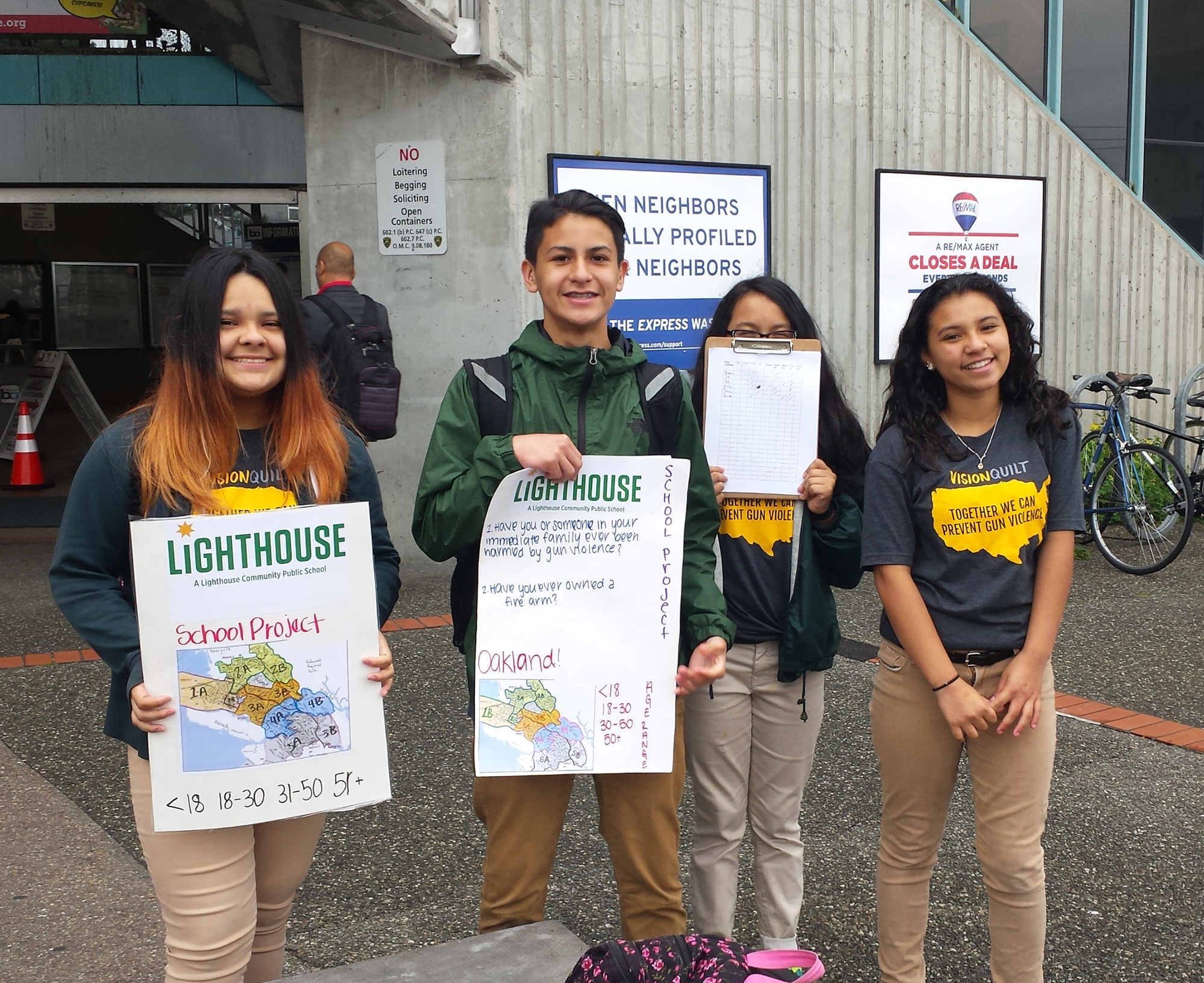
Module D offers a 15-day “case study” exploring the specific community of Oakland — where our school is located — and the stories and statistics that tell the story of gun violence here. In humanities, students read, analyze, and write op-eds about gun violence in Oakland. In math, students create and administer a survey in Oakland, and interpret the results. They create a public display to share their findings. This module focuses on field work — going out to the local commuter rail station to interview community members and then analyze that data.
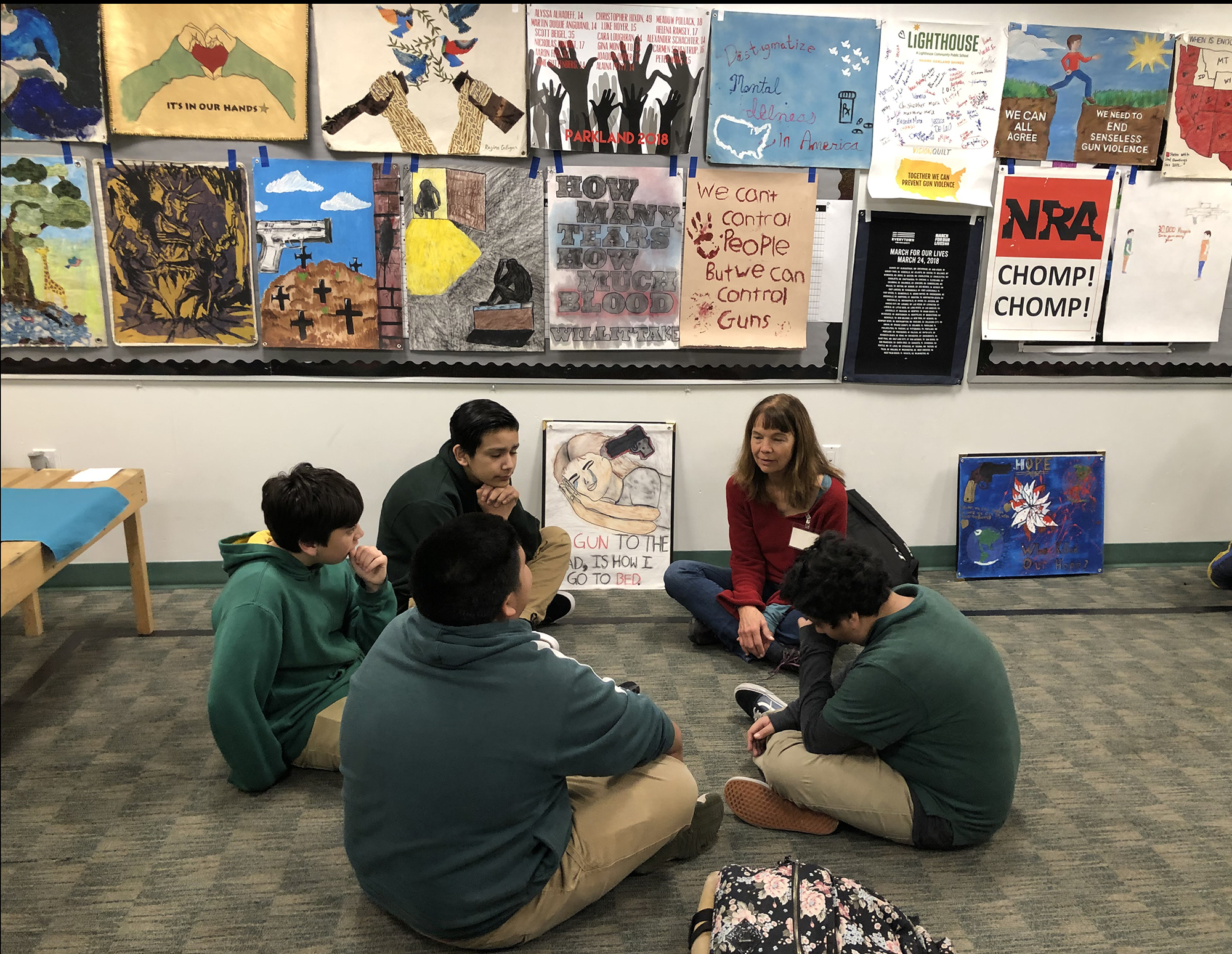
Module E offers our arts curriculum, which was developed by Vision Quilt. The full arts curriculum takes place over the course of 18 class periods. This is an opportunity for youth to synthesize learnings from the other modules, with an emphasis on individual experiences, feelings, and responses to gun violence in the students’ lives. A personal message is created by each student using the tools from the Principles of Art and Elements of Design on a panel that is 18×24-inches. Mathematical components of art, such as spatial awareness and measure are also explored. Writing prompts, including writing an artist statement, incorporate humanities aspects.
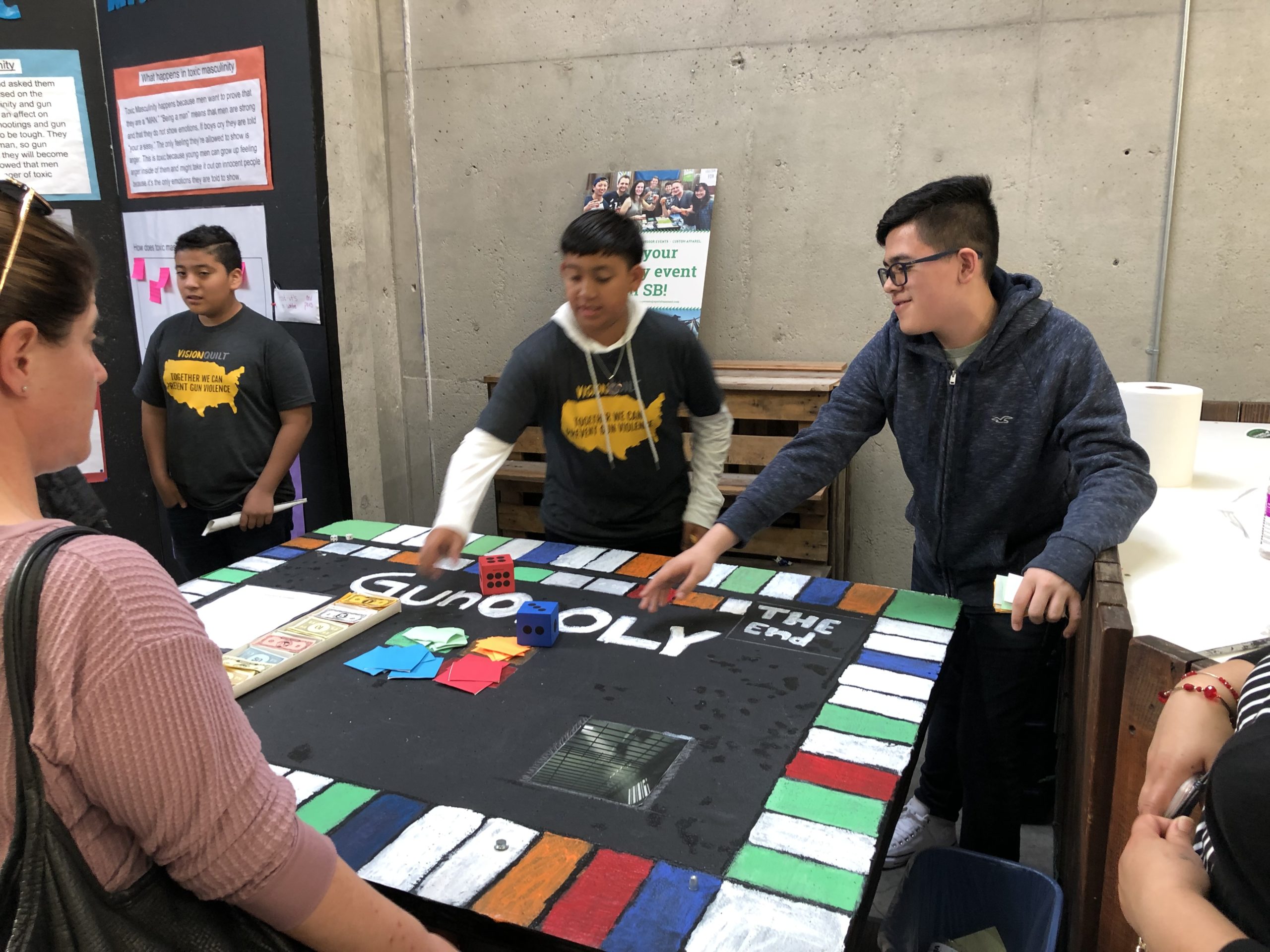
Module F is a student-curated exhibit, displayed at a local art gallery, of what the students have learned and want to share with the greater Oakland community. The module outlines steps for supporting students to think through their exhibit and displays and includes other tasks such as learning how to work as docents during the exhibition itself. Community involvement can include a field trip to a local museum for design inspiration, and inviting local artists to support the students as they develop the exhibition. Here is a video showcasing the Lighthouse exhibition and its impact on the community.
It is our hope that educators nationwide will be inspired by these modules. You can use them in full or just take a single lesson plan for your school day. The digital tool kit is filled with candids and links, so be sure to check it out!
Involving Teens in the Design
Our digital toolkit was designed with support from our Teen Council, which consisted of seven high school youth who had experienced the “Addressing Gun Violence (AGV)” curriculum during our pilot programs. We hoped Teen Council members would assist in the classroom during the 2019-2020 school year, however, we planned to start this work a week before the school closed due to the pandemic. We were able to find alternative ways for our Teen Council youth to lead — they created blogs for the Vision Quilt site about a variety of topics, and presented their experiences at four major events in 2020. A Teen Council member presented an overview of the AGV curriculum at the Oakland Mayor’s Youth-led Town Hall on the School to Prison Pipeline, seen by 4,000 viewers. Another Teen Council member helped design and host three other youth-led conferences through the Oakland Frontline Healers focused on pandemic mental health and academic needs as well as violence prevention, seen by 1,000 viewers.
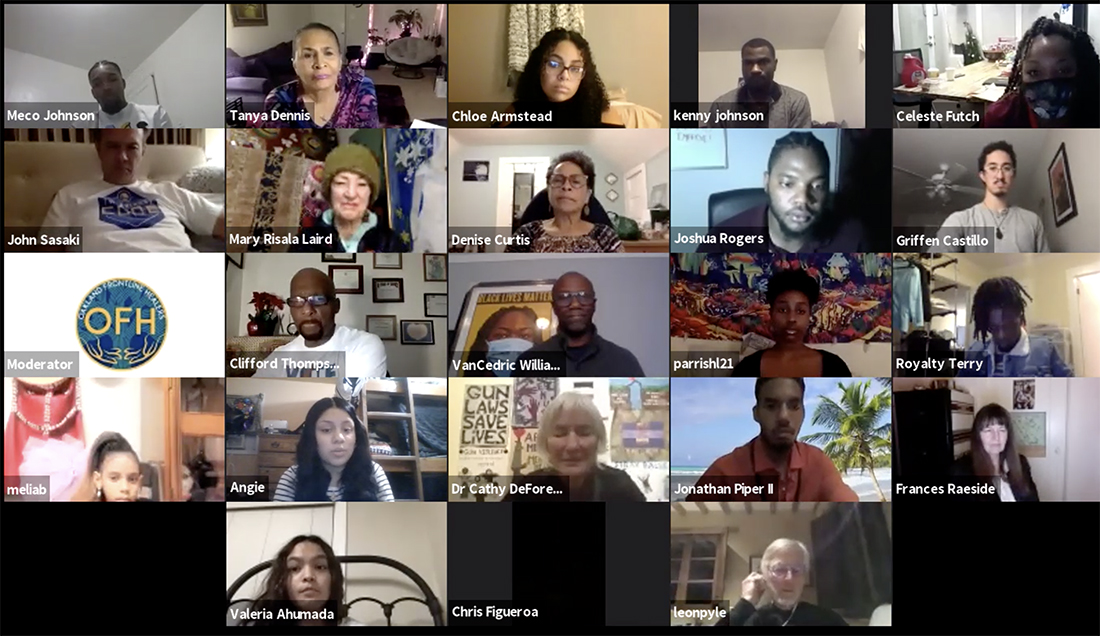
We hope that our work will inspire you and your students to address gun violence and its impact in communities around the country! Please contact Cathy DeForest: visionquilt@gmail.com for more information or support.
Our team,
Athena Larios, Humanities Teacher
Melanie Swandby, Math Teacher
Cathy DeForest, Vision Quilt Founder and Executive Director

